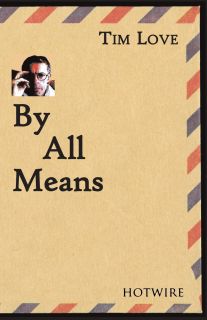Some extracts from Literature in the 21st Century: Understanding Models of Support for Literary Fiction written by Canelo for Arts Council England, published in December 2017.
- It has rarely, if ever, been easy to support literary writing ... print sales of literary fiction have fallen over the last decade, particularly after the recession. Today, despite some recent positive indicators, they remain significantly below where they stood in the mid-noughties ... While ebook sales have made up much of the fall in print sales elsewhere in the book market, this does not appear to be the case for literary fiction. Genre and commercial fiction predominate in ebook format (p.3)
- 2015 Nielsen BookScan data suggests that the top 1% of authors accounted for 32.8% of all sales and within this, the top 0.1% accounted for 13% of total sales (p.19)
- It is interesting to note that despite the grim sales picture, profits at major publishers have not only not been stable but have, if anything, strengthened. (p.22)
- Bookselling operates under an unusual system of sale-or-return, whereby if a book doesn’t sell, the bookseller is able to return it to the publisher and be reimbursed (within a certain time frame). Unlike most industries, financial and inventory risk is here loaded onto the producer rather than the retailer. The idea was that this would encourage retailers to stock new and untested books – but the system can be catastrophic for publishers, with returns of a half to two-thirds of sales not unusual according to those we spoke to. (p.24)
- it would be a mistake to think the ebook market simply mirrors print. In fact it is a very different market in two important ways, neither of which particularly benefits literary fiction, even if it is a boon to the book market as a whole. … ebooks are firstly much cheaper than print books, and secondly that ebooks are more skewed towards genre and commercial fiction. (p.30)
- There is a sense that over the past 15 years or so the position of BAME writers within British writing and publishing, never robust, has in fact gone backwards. In London the proportion of BAME residents in the total population is at 40% (the proportion for the UK as a whole is around 15%) ... 42% of writers from a BAME wrote literary fiction, against only 27% of white writers (p.33-34)
- built on the spread of reading level English, the competitive price of English books and premium demand for English language content … several editors and agents told us confidentially that many of their literary authors were earning more from foreign rights than English language sales. (p.43)
- Kickstarter was one of the earliest sites to work on the crowdfunding model and remains one of the biggest. With a total of $3.3bn pledged through the site, it must rank as one of the world’s largest sources of arts funding. (p.48)
- While big publishers have seen their ebook revenues decline, the proportion of books that are ‘non-traditionally’ published now make up 60% of titles on the Kindle and 40% of revenues (p.49)
- Wattpad, which lets users post and share stories they have written from small fragments to vast sequences of novels, has 60m monthly active users spending 15bn minutes on the site every month. 64,000 new stories are uploaded daily, adding to a corpus of over 400m works. It may not be literary; but it points in the right direction, suggesting that digital technology can greatly facilitate new modes of writing and reading. (p.50)
 My story collection "By All Means" (ISBN 978-0-9570984-9-7), published by Nine Arches Press, is on sale from
My story collection "By All Means" (ISBN 978-0-9570984-9-7), published by Nine Arches Press, is on sale from  My poetry pamphlet "Moving Parts" (ISBN 978-1-905939-59-6) is out now, on sale at the
My poetry pamphlet "Moving Parts" (ISBN 978-1-905939-59-6) is out now, on sale at the 
No comments:
Post a Comment